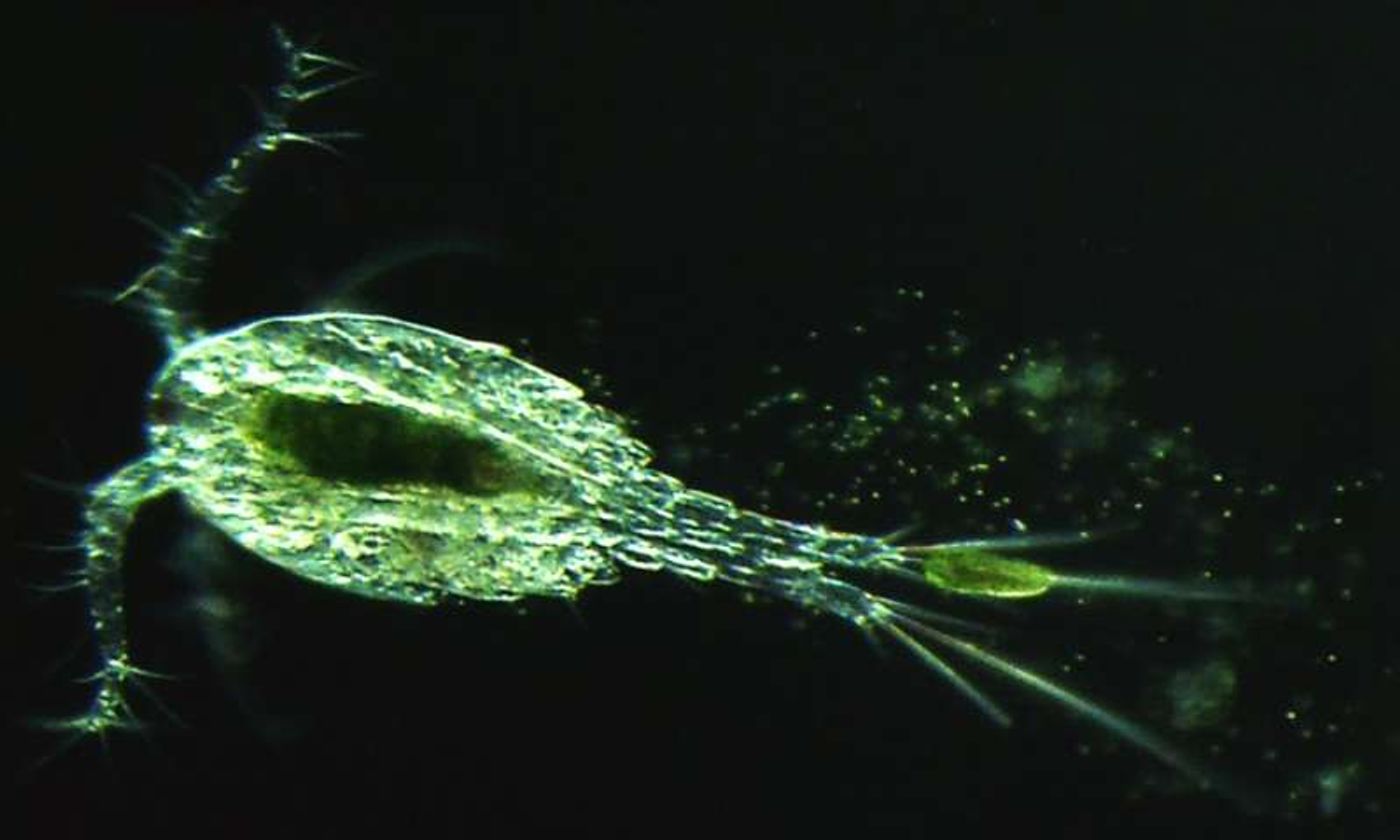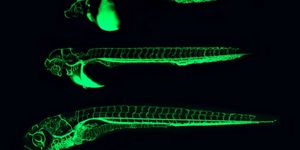Researchers have demonstrated that the consumption of prey by predators can stimulate a cyclical increase and decrease in chlorovirus populations. The authors of
the study in the Proceedings of the National Academy of Sciences suggest that in an ecosystem, a food web can have a big impact on virus levels.
Chloroviruses infect green algae that live inside a single-celled paramecium, in a symbiotic relationship. Algae provide the paramecia with food while the paramecia can protect the algae from chloroviruses. Those chloroviruses hang out on the surface of paramecia, waiting for a chance to infect the algae. You can see algae inside of a paramecia in the following video.
The team found that copepods, tiny crustaceans about one millimeter long, feed on the paramecia. The paramecia remain only partially digested, however, and they get broken down just enough to expose the alage inside to the water after being excreted by the copepods. That is when they are very susceptible to the chlorovirus. The authors conclude that the copepods are a stimulant for viral replication and infection.
"We don't know anybody who's ever seen anything quite like it," said James Van Etten, chlorovirus discoverer and William Allington Distinguished Professor of Plant Pathology. "This is the first example, as far as we know, where a predator is actually releasing the host for a virus."
The investigators put chlorovirus and algae-housing paramecia into freshwater, to find that without paramecia-chomping copepod, chlorovirus levels barely moved over several days. But with the addition of only one copepod, those levels rose almost 100 times in just one day. That spike was analogous to the increase in chloroviruses seen after exposing to paramecia to a burst of sound waves, indicating that this exposure is the likely cause of the viral bloom.
David Dunigan, a Co-author and Research Professor of Plant Pathology, commented that the finding demonstrates how food web structure within an ecosystem could impact viral propagation. In the video, a copepod consumes paramecia.
"It's potentially a game-changer in virology, because it means that the gut becomes a very special place for virology," Dunigan commented. "Generally, virology is taught from the point of view that infection comes from random collisions between the cell of the host (and the virus). In other words, the probability of infection under those conditions is just a function of the concentration of these two things.
"What's very different about what we're seeing is that it's independent of concentrations. The outcome - the genesis of the virus - is essentially (a result of) how fast the predator eats. If it eats more, you get more virus."
The team also said this variable could help to explain why chlorovirus populations rise and fall throughout a year. John DeLong, Assistant Professor of Biological Sciences, designed a mathematical model incorporating the rate of copepod foraging in order to predict the rate of viral replication in natural environments.
DeLong’s model showed a bloom-and-wither cycle that generally matched the extent of chlorovirus patterns that are observed in freshwater lakes.
"When a predator eats a lot of prey, the prey crash, and then the predators crash," DeLong explained. "Then, when the prey are free of predators, they grow again, and then the predators come back. If that's true, and the foraging rate is the thing that gives us viruses, the point in the cycle that has the greatest foraging rate is when we should see the biggest spikes in viruses.
"So we just basically piggybacked virus production onto the normal predator-prey cycle that would come out of this system, and sure enough, it produces peaks in the viruses. It also comes fairly close to the kinds of observations (we've seen). As a modeler, that tells me that this is at least a viable explanation for cycles of viruses in nature."
With so many known symbiotic relationships in existence, this viral dynamic could be playing out in a variety of ecosystems around the globe, Van Etten suggested.
"We suspect that, if people look, they're going to find similar (interactions)," said Van Etten, a co-director of the Nebraska Center for Virology. "In fact, we have suggested that coral reefs might be one possibility ... where something like this could take place. There are certainly places to look."
Sources:
Phys.org via
University of Nebraska-Lincoln,
PNAS









